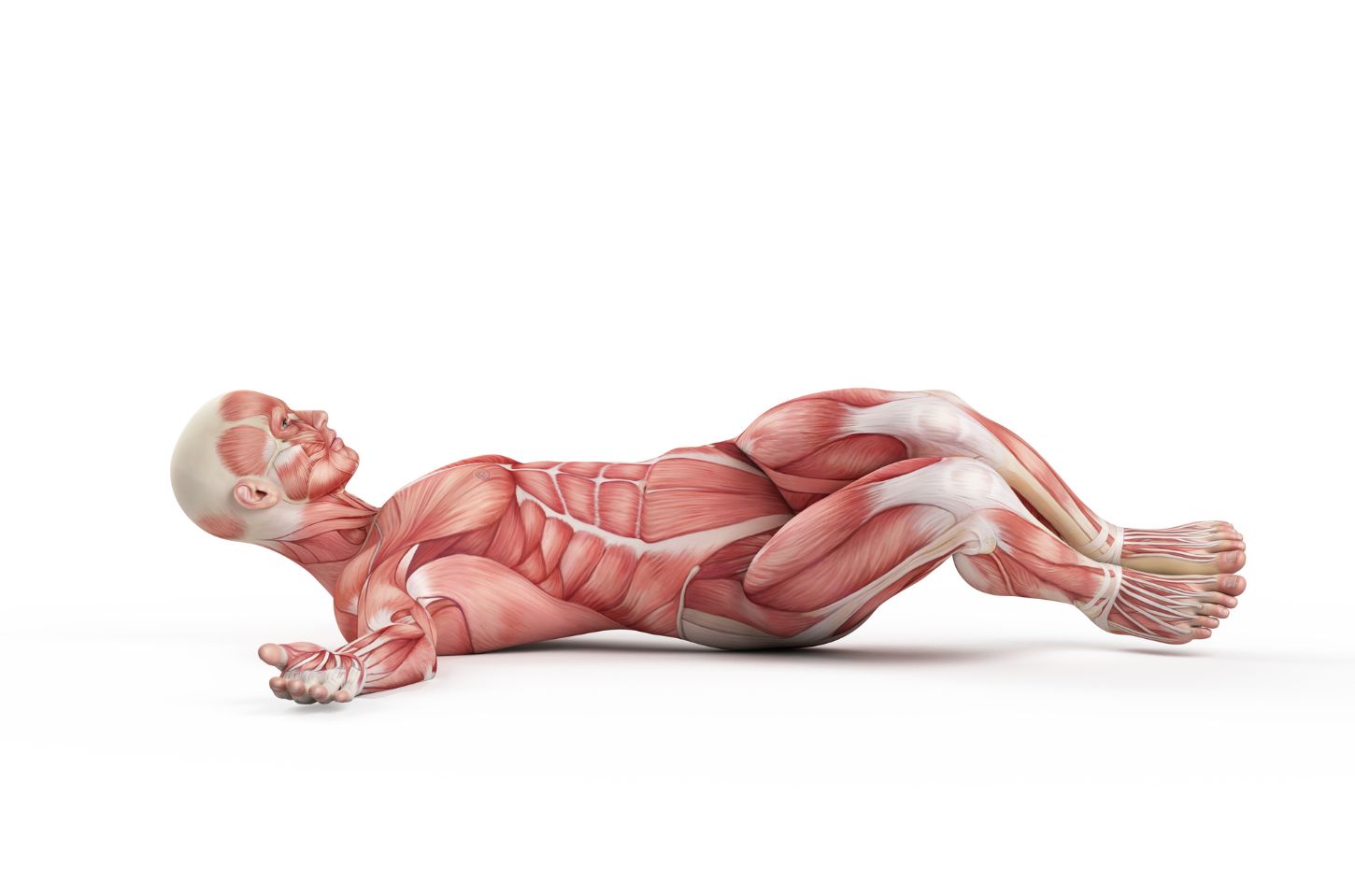
A strong core isn’t just about aesthetics; it’s the foundation for a healthy body. Good core strength is linked to improved balance, increased power, and better overall movement (1, 2, 3).
No wonder there’s so much confusion about the “best” core exercises! The truth is, any safe core strengthening routine will benefit you. But to maximize your results, we’ve compiled a list of the most effective ab exercises available.
Add these exercises to your ab workouts!
You’ll also like:
- The Only Ab Exercises You’ll Ever Need for Six-Pack Abs, According to Science
- Over 60? Here Are The 10 Best Core Exercises You Should Be Doing
15 Best Exercises Missing From Your Ab Workouts

While these exercises are a great foundation for core strength, it’s important to find the right ones for you. If you have an injury or some other limitations, consider modifications or explore different exercises. Always consult a qualified healthcare professional before starting any new exercise program.
1. Plank
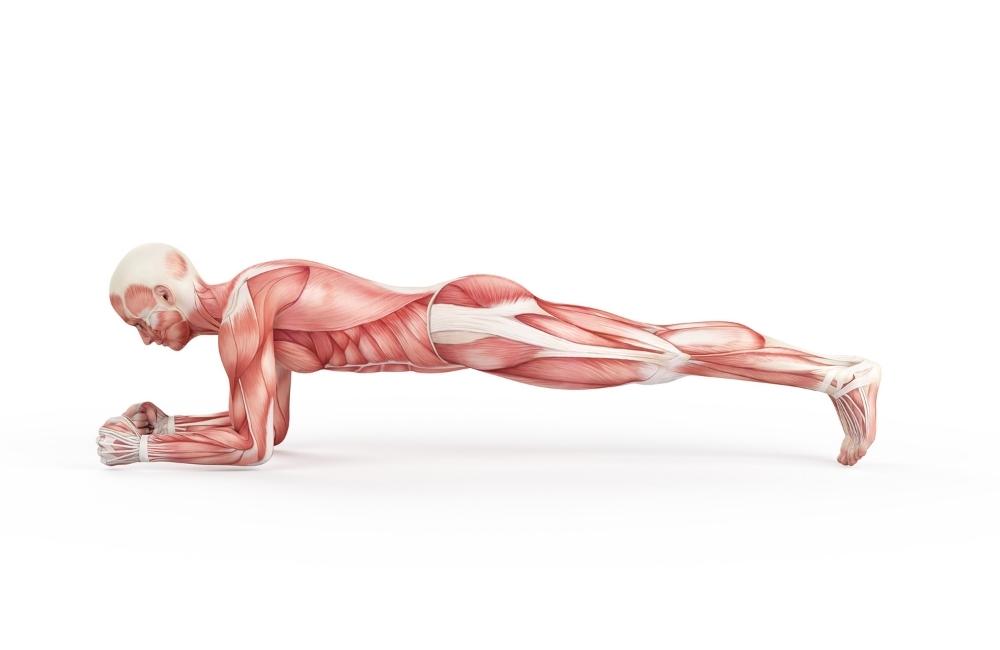
The plank is one of the most foundational movements in fitness. This exercise builds stability throughout the entire body, but especially in the core. Just make sure you don’t let your back sag during your plank!
How to Perform:
- Place your forearms flat on the floor, with your elbows directly beneath your shoulders.
- At the same time, rise up onto your toes, with your feet spaced 1-2 inches apart.
- If you can, check yourself in a mirror (from a side view) to ensure that you have made a straight line from your head down to your heels. You should strive to avoid picking (raising your butt in the air) and sagging (letting your back and midsection dip).
- Throughout the plank, be sure to keep your abdominal muscles tight.
- A good starting goal is to be able to maintain a plank for 30 seconds each time, then slowly increase your time over weeks and months.
2. Side Plank
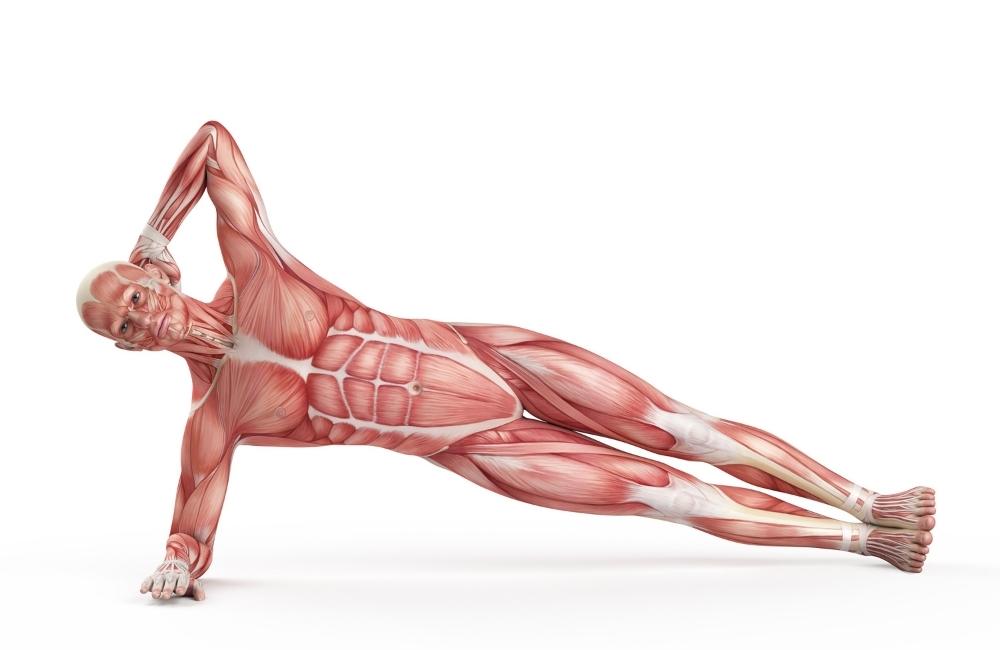
The conventional plank is a great exercise for the rectus abdominis (the six-pack muscles). The side plank, on the other hand, is an excellent choice for strengthening the obliques.
The obliques are the muscles on either side of the stomach. This group of muscles is largely responsible for power production and trunk stability during many athletic movements, such as swinging a bat.
How to Perform:
- Begin by lying on your left side.
- Place your left forearm on the ground, with your left elbow directly under your left shoulder.
- Stack your right foot on top of your left foot and lift your body up. At this point, the only parts of your body contacting the ground should be your left forearm and your left foot.
- Strive to hold this position without sagging or piking for 30 seconds. As time goes by, try to increase your hold time as much as possible.
3. Bird Dog
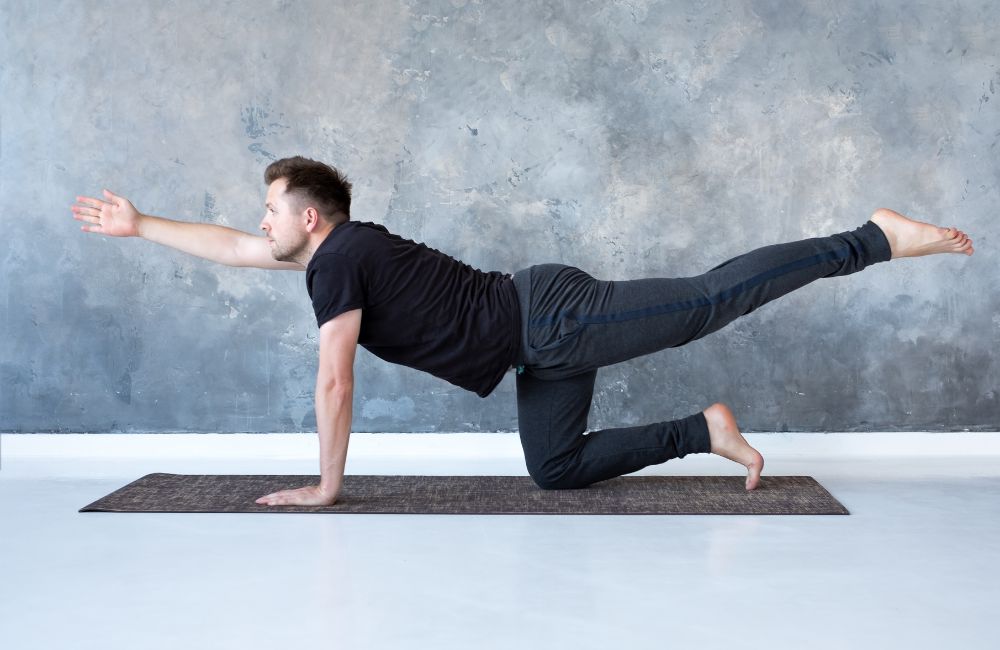
Bird dogs are a favorite move of many physical therapists. This is especially true when it comes to patients with low back pain.
This exercise emphasizes some of the very tiny muscles throughout the spine known as the multifidi. These muscles are integral to spinal stability.
How to Perform:
- Start on your hands and knees, with your hands directly under your shoulders and your knees directly under your hips.
- Slowly, extend your right arm out in front of you as you simultaneously extend your left leg behind you. At this point, you should be able to draw a straight line from the tips of your right-hand fingers to your left-leg toes.
- Hold this position for three seconds, return to the starting point, and repeat on the other side for 10 reps per side.
- Be sure to avoid sagging or piking in your low back during this move.
4. Russian Twist
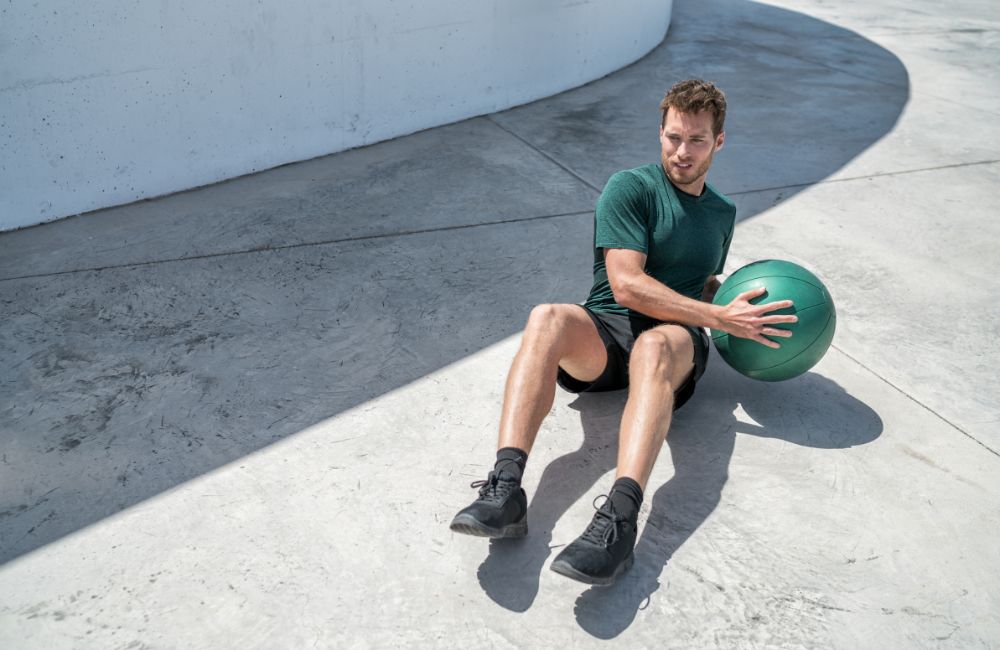
The Russian twist is a very popular move for working all of the abdominal muscles. This move is especially effective for the obliques. Best of all, the Russian twist is easy to progress by holding weight during the movement.
How to Perform:
- Start in a seated position.
- Lean back as far as you can, until you feel your abdominal muscles engage.
- If you are able to do so, lift your feet up off the ground so that you are balancing only on your upper gluteal region.
- Interlace your fingers and rotate your trunk from side to side. You should aim to touch the ground on each side during each rep.
- Perform 10 reps per side for each set.
5. Stir the Pot
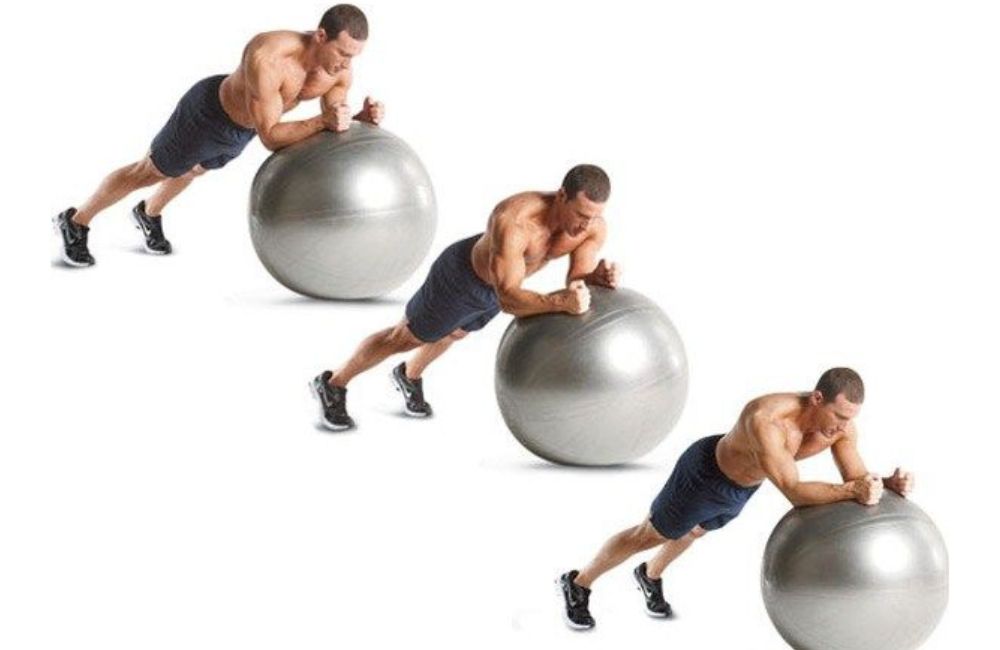
Pot stirrers (or stir the pot) are terrific for building overall core stability and strength. Usually, this movement is performed with the arms placed on a large swiss ball.
However, if you don’t have one, or would prefer not to use one, you can still stir the pot on the ground. Instead of moving the ball, you’ll just move your hips in circles with your forearms and toes on the ground.
How to Perform:
- Place forearms safely on a large swiss ball.
- Your toes should be firmly planted on the ground, with your feet about 1-2 inches apart (you can increase the width of your stance if you feel nervous or want to increase your base of support).
- Maintaining a flat back, push the ball in large clockwise circles. Perform 10 reps in this direction, then 10 reps in the counterclockwise direction.
6. Toe Reach
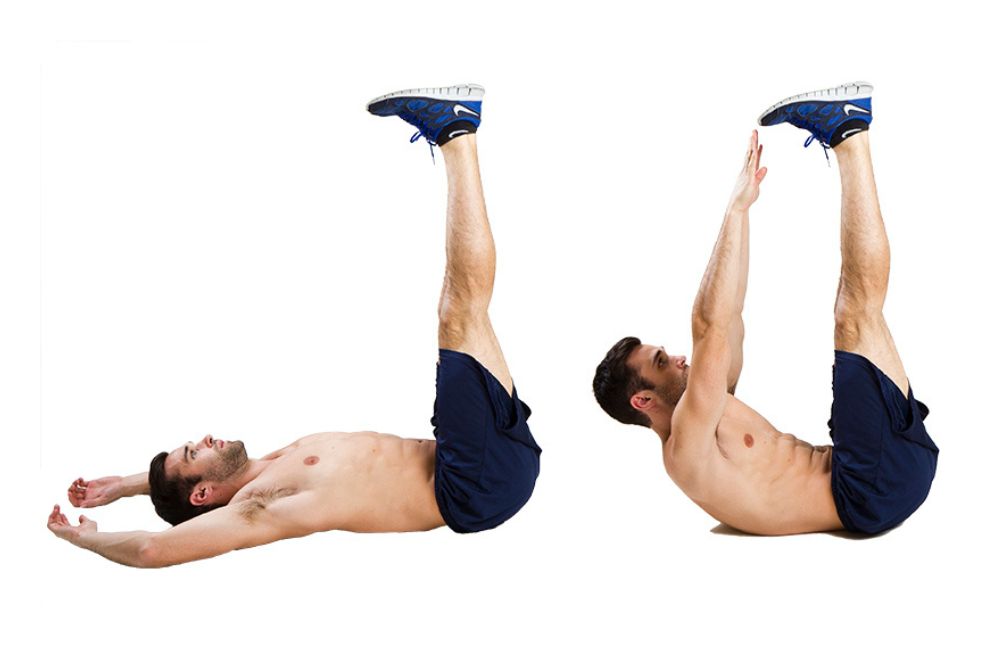
Of the exercises on this list, the toe reach is often one of the most challenging. This exercise requires both a significant amount of core strength, as well as good hamstring flexibility.
How to Perform:
- Lie flat on your back to start.
- Raise your legs in the air, aiming to reach them straight up towards the ceiling, so that they are perpendicular to the ground.
- Extend both of your arms toward the ceiling as well.
- Keeping your legs in the same position, lift your shoulder blades off of the ground as you attempt to touch your toes with your outstretched hands.
- If you are unable to touch your toes at first, that’s ok! You’ll improve over time.
- Repeat for 10 repetitions each set.
7. V-Up
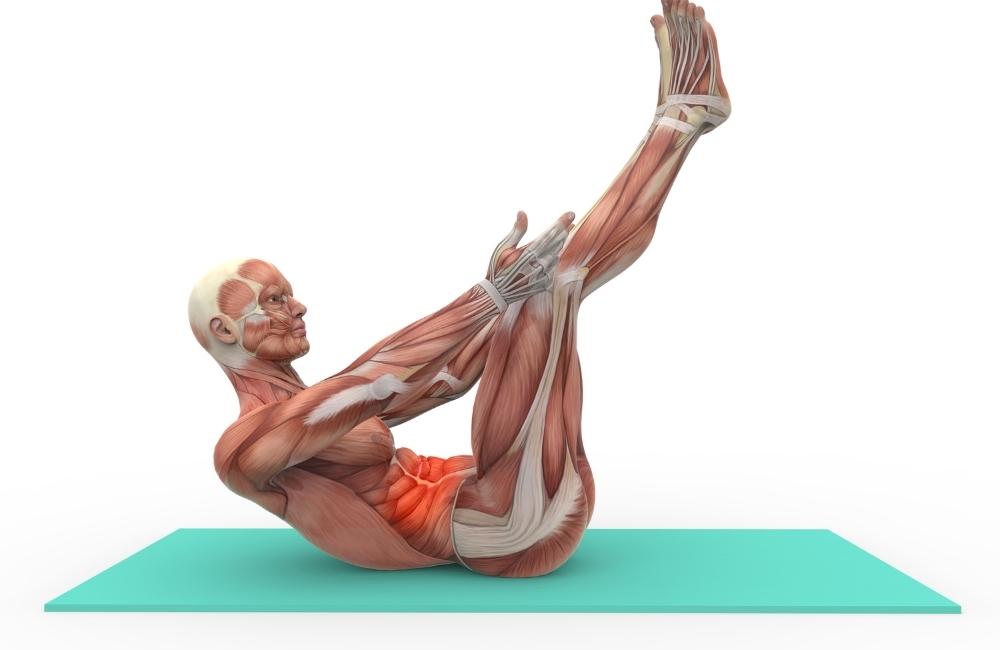
The V-Up exercise can be considered as a progression of the toe touch. V-Ups require balance, coordination, flexibility, and strength. But if you can’t effectively perform this exercise right away, keep working! You’ll be able to complete a set of clean V-Ups before you know it.
How to Perform:
- Lie flat on your back, with your arms extended straight overhead, and your legs extended straight down.
- Next, simultaneously bend your trunk upward (as if doing a sit-up) as you lift your legs with straight knees. Imagine that your body is folding in on itself as you attempt to keep your legs, arms, and trunk as straight as possible.
- Perform 10 repetitions for each set.
8. Crunches
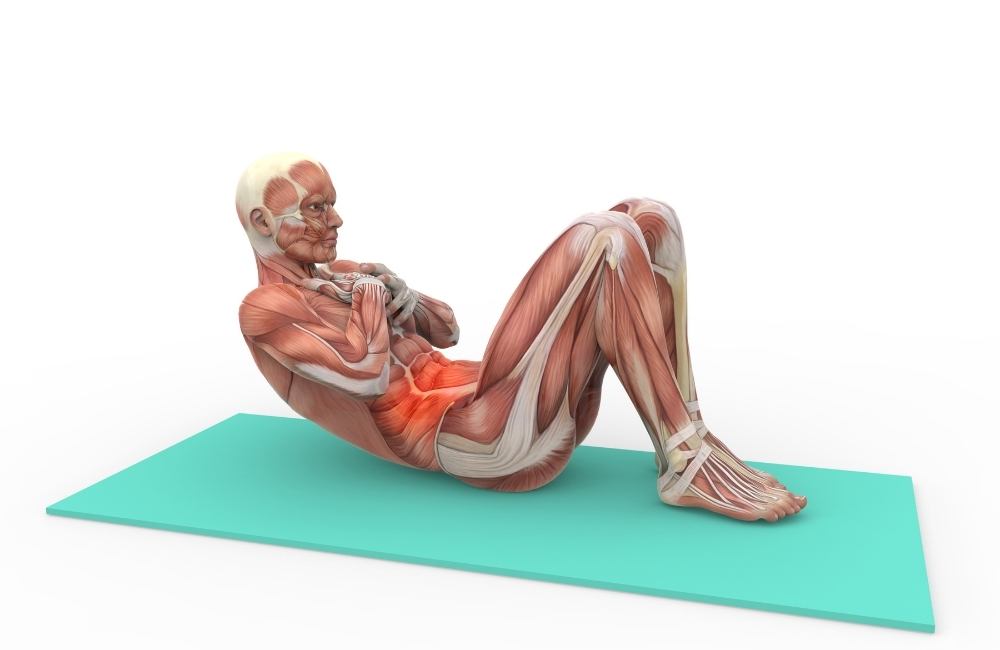
An oldie, but a goodie. Crunches are a terrific exercise that has stood the test of time. Even better: you can literally perform crunches anywhere, as long as you have space to lay down.
How to Perform:
- Lie with your back flat on the ground, your feet flat on the floor, and your knees bent.
- Cross your arms over your chest so that your right hand is on your left shoulder and vice versa.
- Lift your shoulder blades up off the ground, then return to the starting position to complete the rep.
- Perform 10-20 repetitions per set.
9. Alternating Leg Lowers
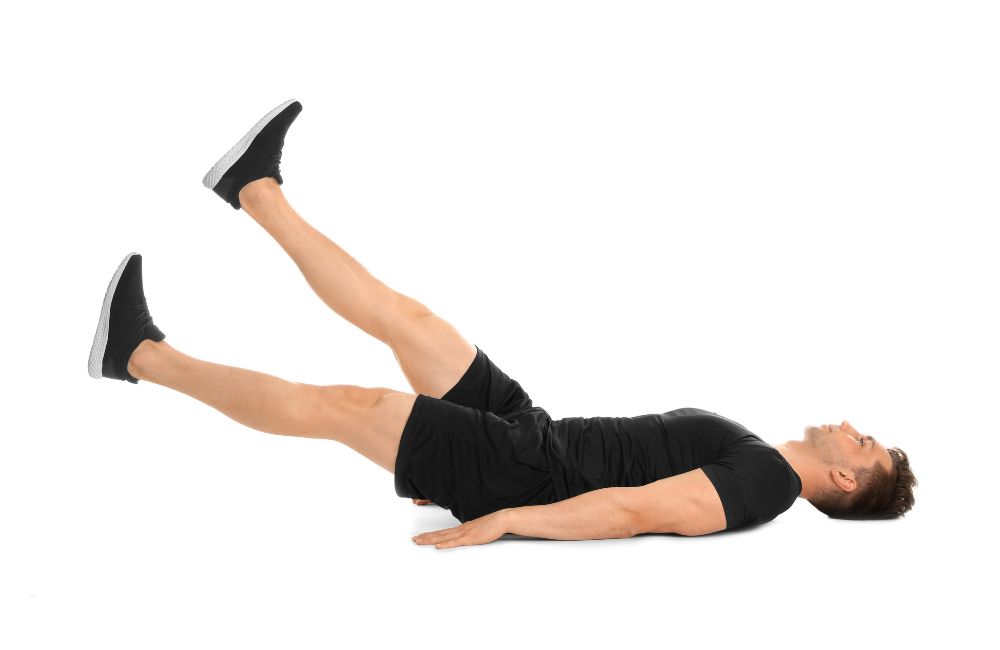
Sometimes referred to as “scissors”, alternating leg lowers are a very challenging exercise. This movement, much like the V-Up and the toe touch, requires a great deal of both flexibility and strength.
How to Perform
- Start by lying on your back, with your legs extended straight up in the air, pointed toward the ceiling.
- Slowly, lower your left leg until it is roughly 3 inches from the floor, keeping your right leg in the starting position.
- Next, gradually lift your left leg back to the starting position and repeat on the right side.
- Complete 10 repetitions on each side per set.
10. Inchworm
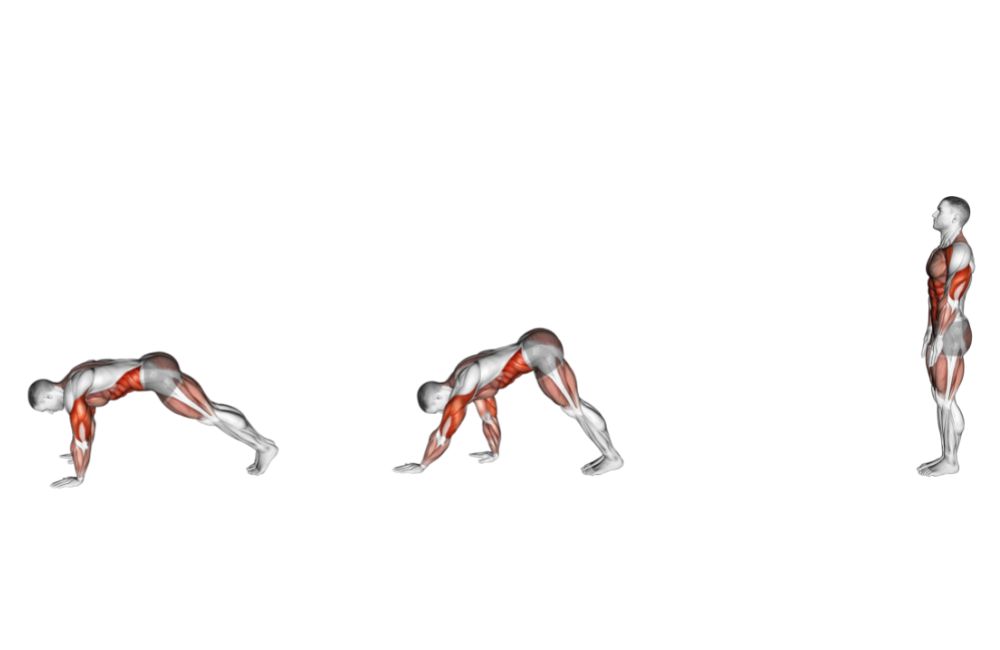
Shoulder stability is intimately connected with core stability. For this reason, the inchworm is a terrific total body exercise.
How to Perform:
- Start in standing, with feet about hip-width apart.
- Place your hands on the ground and slowly begin to walk your hands forward, step by step, while keeping your feet stationary.
- Keep walking your hands forward until you are in a pushup position (or go a little further if you’re able).
- Once you’ve reached this position, begin to walk your hands backward, reversing the motion.
- Complete 10-12 repetitions per set.
11. Pallof Press
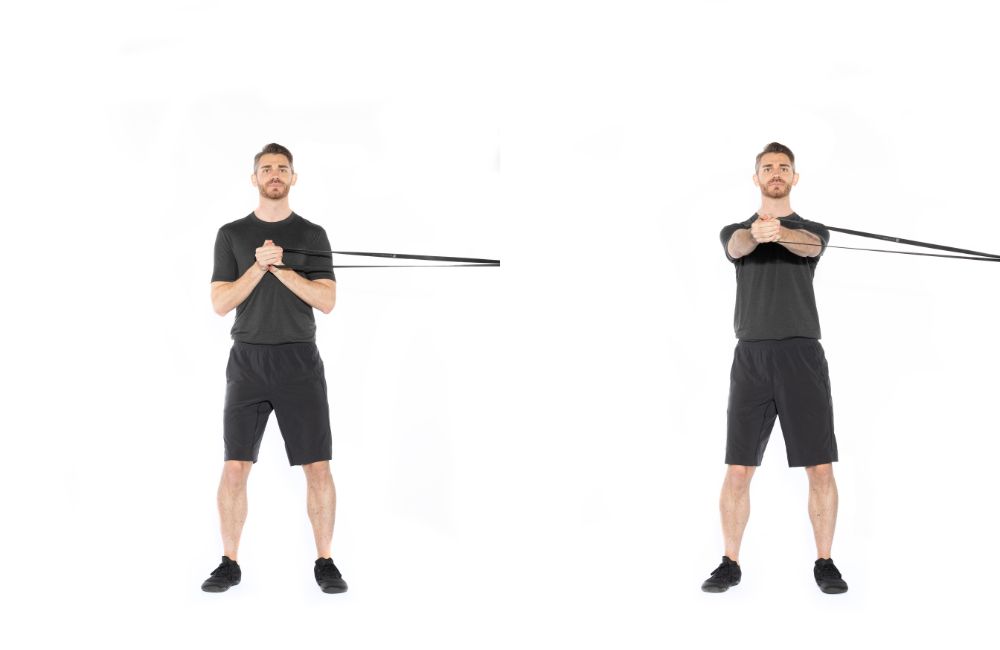
Adored by boxing coaches and many other athletic populations, the Pallof press is an incredible exercise for rotational core strength. If you don’t have a cable or pulley system available to you, bands work just fine!
How to Perform:
- Grasp pulley handles with both hands.
- Ensure that you are standing in a perpendicular direction to the line of the pulley.
- Begin the motion with your hands at your chest, then press straight forward, avoiding any side-to-side deviation.
- Slowly bring the handle back toward your chest to complete the rep.
- Complete 10-12 repetitions per set.
12. Jackknife Pullover
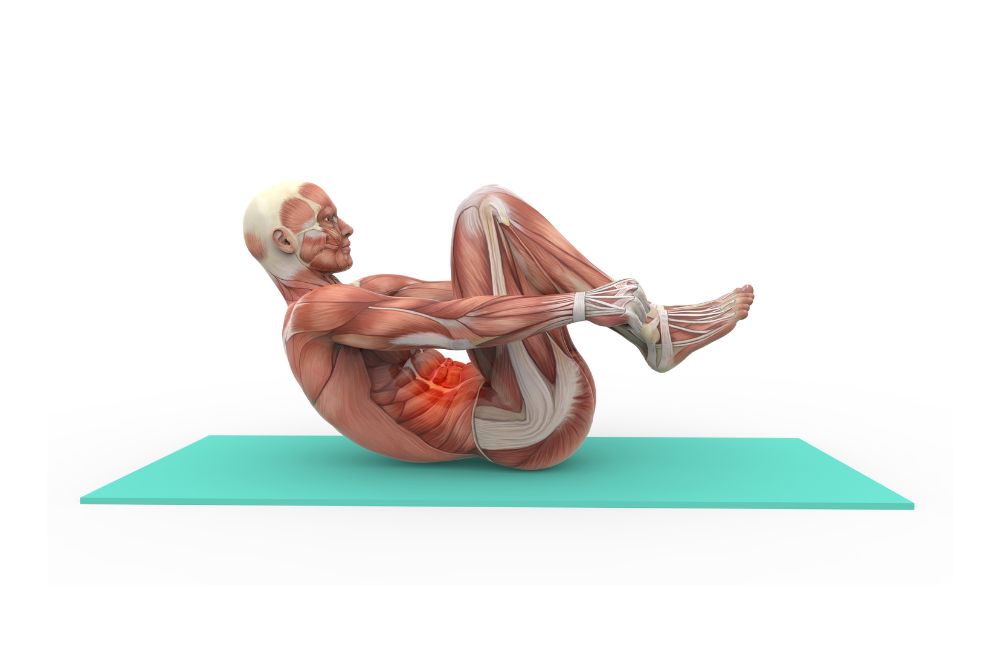
The jackknife pullover is a terrific exercise that can be made extremely difficult with the addition of even very lightweight. Be certain that your whole back remains in contact with the ground throughout the movement.
How to Perform:
- Start by laying on your back, holding a lightweight in both hands.
- Extend the weight behind your head, with your elbows straight, with the weight elevated slightly above the ground. At the same time, extend your legs out straight with your heels elevated slightly above the ground.
- Next, bring your knees up towards your chest, as you pull the weight forward to meet your knees. Keep your elbows as straight as possible throughout the whole movement.
- Reverse the motion to complete the repetition.
- Perform 10-12 repetitions per set.
13. Mountain Climbers
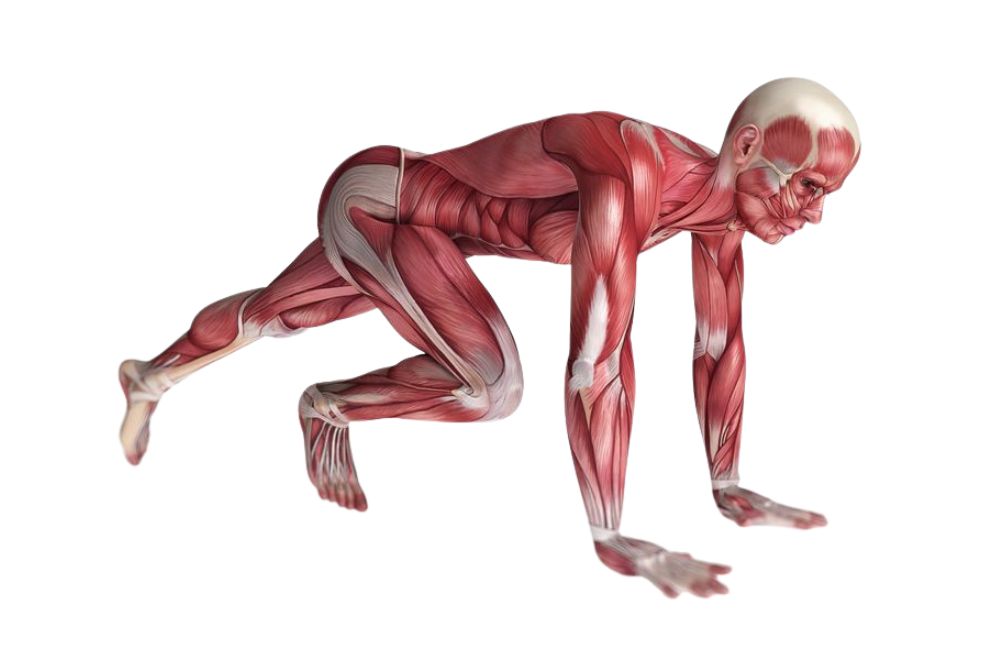
Mountain climbers are great for both core strengthening and cardiovascular endurance. Also, this exercise can be modified in a variety of ways to accomplish different goals.
How to Perform:
- Place both hands on the ground, as well as both toes, as if you are in a pushup position.
- Slowly bring one knee toward your chest and then slowly return it to the starting position. Then repeat the motion on the other side. (If your goal is to increase your cardiovascular endurance, perform the motion very rapidly, alternating between sides.)
- Complete 10-15 reps per side, per set.
14. Reverse Crunch
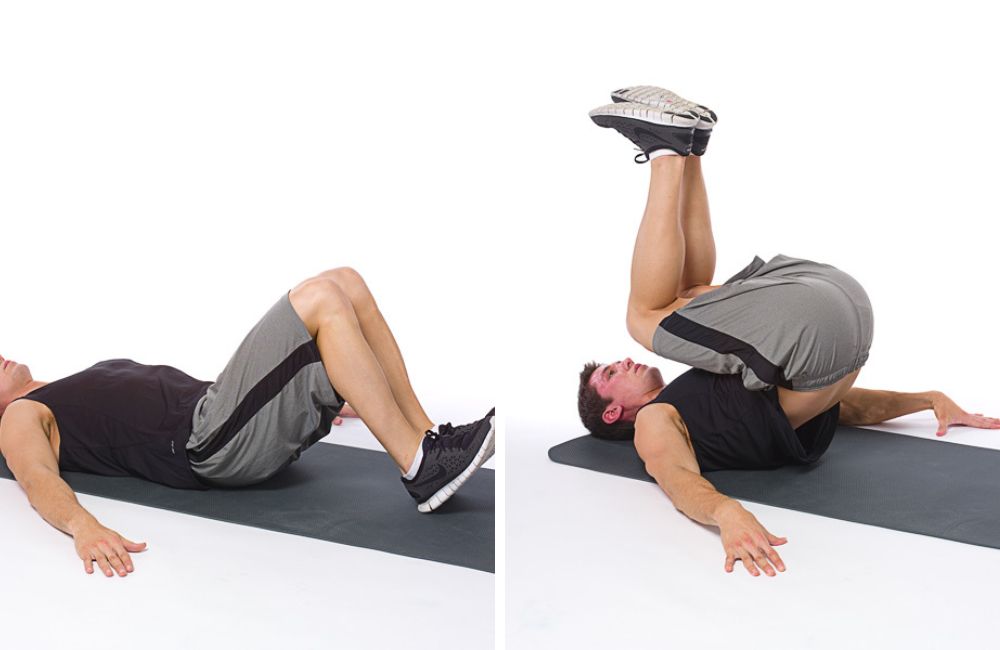
The reverse crunch is just how it sounds: the legs move instead of the upper body. This move is excellent for putting some different emphasis on the abdominal muscles as opposed to the traditional crunch.
How to Perform:
- Lie flat on your back with your knees bent and your feet flat on the floor.
- Bring your knees toward your chest and slightly elevate your low back as you do so.
- Then reverse the motion to complete the repetition.
- Complete 10-12 repetitions per set.
15. Hollow Hold
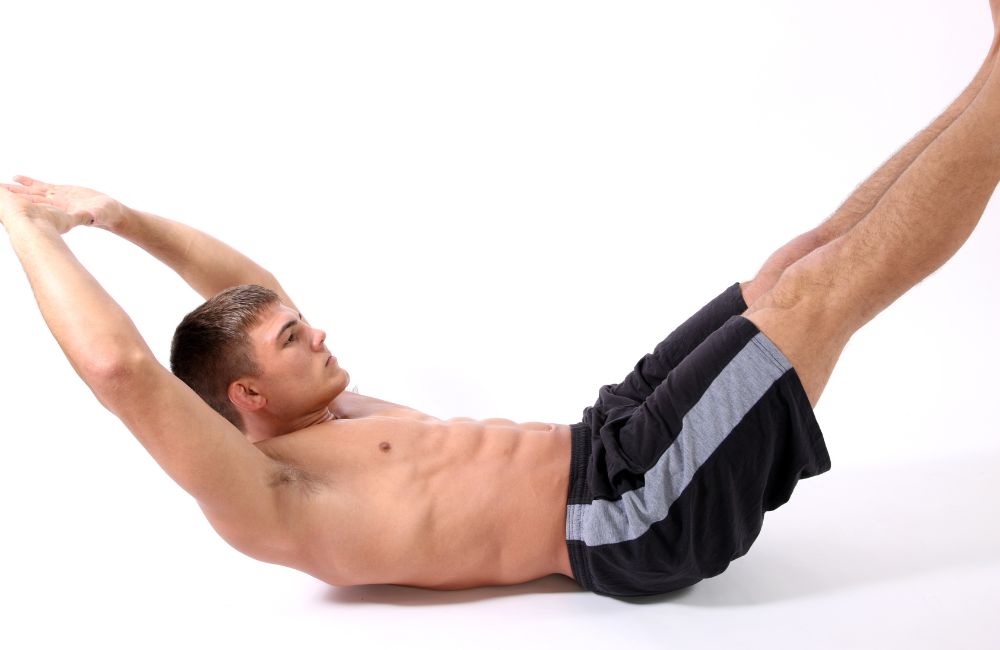
A popular yoga mode, the hollow hold is a great abdominal endurance exercise. This move is similar to a plank, in that it is an isometric hold. Isometric exercises are a great way to complement the other isotonic exercises on this list.
How to Perform
- Lie flat on your back with your legs straight and your arms straight above your head.
- Lift both of your arms and legs off of the ground, keeping your abdominals engaged.
- Hold this position for 30 seconds per set.
Putting it All Together
If you’re looking for a great ab workout involving all of these exercises, you can simply perform them all in a circuit fashion. For example, perform the first exercise in this series for the prescribed number of reps, then the second exercise, and so on until you have completed all 15. Then repeat the whole circuit 3 times.
Try this workout for yourself and see what you think!


